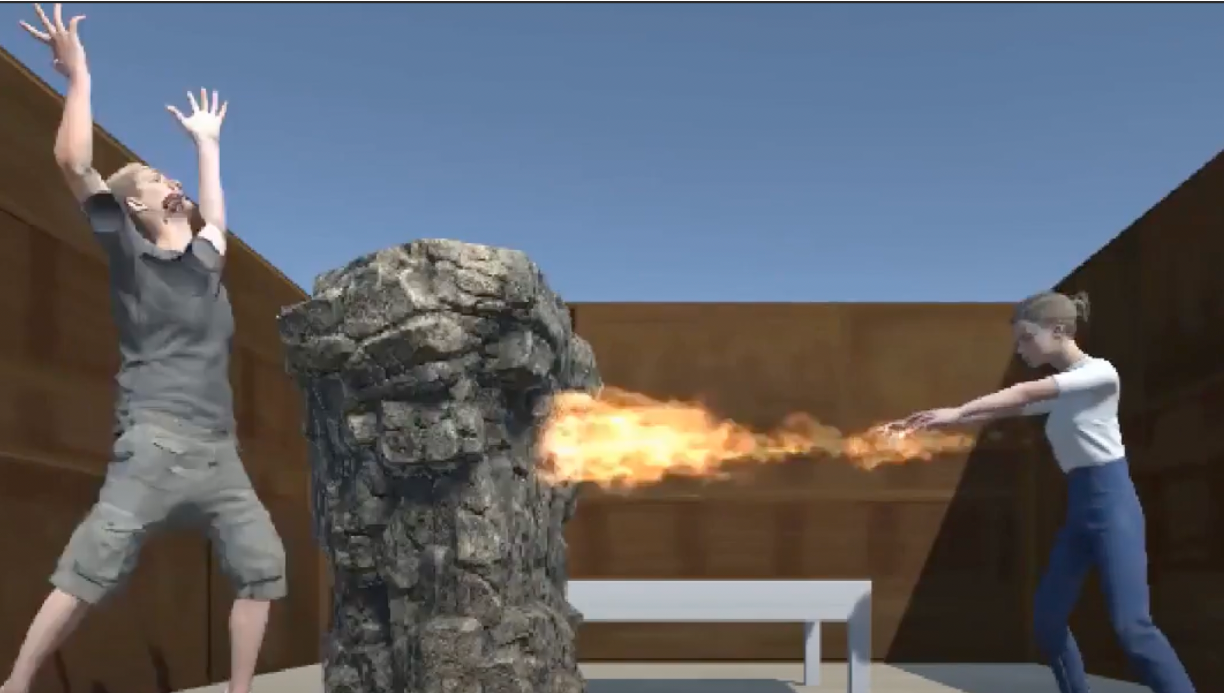
All AR and Education Projects
Augmented Reality Education
Tracking Energy in Pendulums
Advances in augmented reality (AR) have been studied to supplement hands-on, physical labs. While prior research has focused on advancing content mastery and science interest, little work has investigated using AR to enhance scientific reasoning in laboratory classrooms. This study introduces an AR-enhanced physics lab to teach scientific reasoning and the understanding of measurement uncertainty. AR overlays of protractors, real-time energy flow graphs, and an automated period counter were created to reduce extraneous cognitive load and illuminate scientific insights throughout a pendulum experiment. Compared to the traditional lab, participants who experienced AR enhancement demonstrated greater insights into data differences, increased trust in their findings based on uncertainty analysis, and a deeper understanding of energy concepts. Results from the between-participant study (n=52) suggest the AR-enhanced lab enhances participants’ scientific reasoning skills (Bayes factor of 17.44) and demonstrates AR’s potential to improve scientific reasoning while maintaining interest and content mastery.
XR for Distance Education
With the rise of distance learning and online education, many educators are seeking new technological solutions to aidstudents in the learning process. As a result, augmented reality (AR) and virtual reality (VR) technologies have gained traction as potential avenues for remote learning. In this paper, we outline the current methods for distance learning, as well as the educational and technical challenges that accompany them. We then summarize prior relevant attempts that leverage AR and VR technologies for educational purposes, evaluate the advantages of AR and VR in an educational context as a whole, and finally assess their limitations as possible avenues for further research.
Location-Based Outdoor Learning
Outdoor learning experiences, such as field trips, can improve children’s science achievement and engagement, but these experiences are often difficult to deliver without extensive support. Narrative in educational experiences can provide needed structure, while also increasing engagement. We created a narrative-based, mobile application to investigate how to guide young learners in interacting with their local, outdoor environment. In a second variant, we added augmented reality and image classification to explore the value of these features. A study (n = 44) found that participants using our system demonstrated learning gains and found the experience engaging. Our findings identified several major themes, including participant excitement for hands-on interactions with nature, curiosity about the characters, and enthusiasm toward typing their thoughts and observations. We offer a set of design implications for supporting narrative-based, outdoor learning with immersive technology.
AR Flashcards
Sometimes studying flashcards can be boring. However, augmented reality can create a fun way to study. This projects showcase two ways AR can help students memorize information in flashcards. Students are able to import flashcards from quizlet or create their own in-app. The app then turns those flashcards into fun, augmented reality games.
Augmented Reality
Diagnosing Unseen Robot Errors - Lam Research
Many robots need to be run in opaque boxes for safety and to reduce contamination. However, when this makes it difficult to diagnose and attend to errors when the robot malfunctions. Augmented reality can help engineers visualize robotic information that previously was shown as numbers on a screen. This provides for faster diagnosis and better intuition for robotic maintenance and manipulation.
Education
Teachers’ Perspectives on Technologies for Science Labs
High school science laboratories serve as critical spaces for developing scientific reasoning inquiry skills, yet educational technology often struggles to support these practices. Through engaging with science teachers via school visits (n=7), surveys (n=58), and interviews (n=18) spanning diverse socioeconomic contexts, we investigate how teachers envision technology’s role in science labs. We identify mismatches between existing technologies and classroom realities. Many technologies focus on showing abstract concepts and “perfect” simulations, while teachers favored students learning the “ways of science’’ (e.g., lab skills, designing experimental methods) and grappling messiness of empirical data. Typically, teachers modify traditional labs to meet diverse student needs. However, todays technologies but lack this flexibility. We therefore argue for moving beyond pure technical sophistication towards pedagogy-based technologies that empower teachers and promote equitable science education. In this work, we contribute actionable design guidelines towards laboratory teaching technologies emphasizing customization, preservation of hands-on experiences, and real-world knowledge transfer.
Thermodynamics
This simulation allows undergraduate students to view the relationship between temperature, pressure, and entropy. Students are able to manipulate the vapor dome (a 3D map of the aformentioned relationships) and view how it creates the 2D graphs typically used in thermodynamic analysis. This simulation is currently being used at the University of Maryland for helping students understand Thermodynamics.